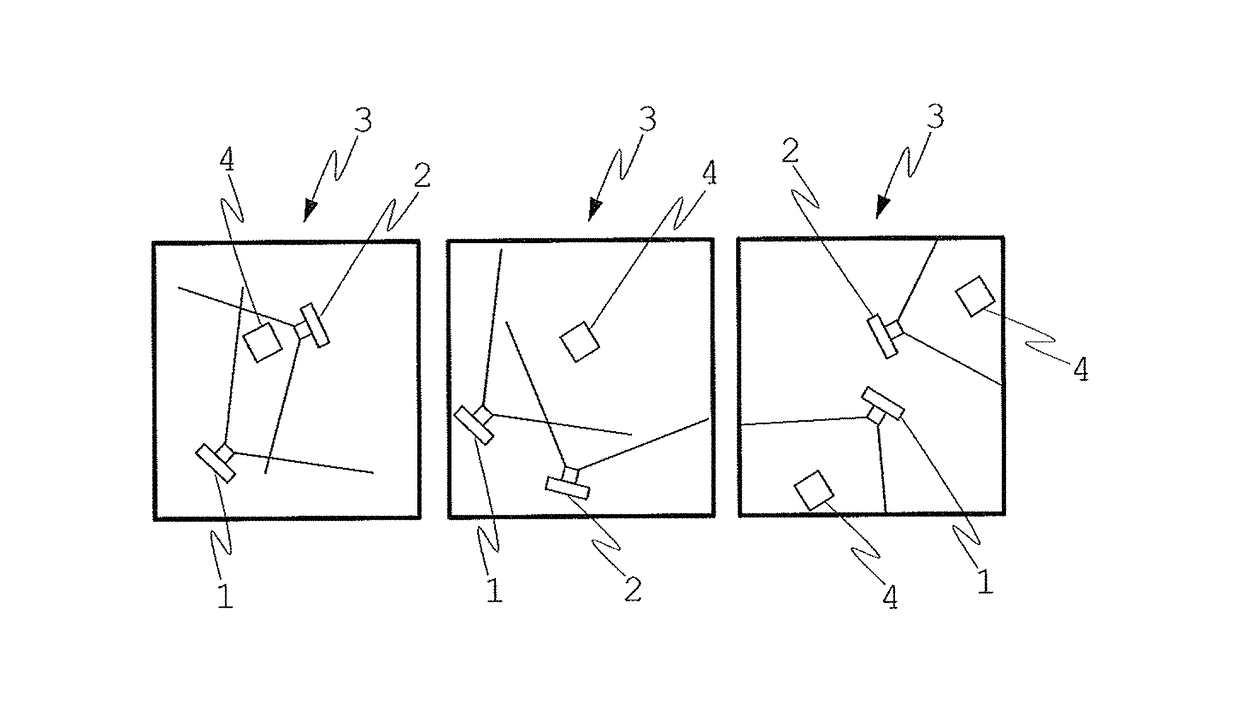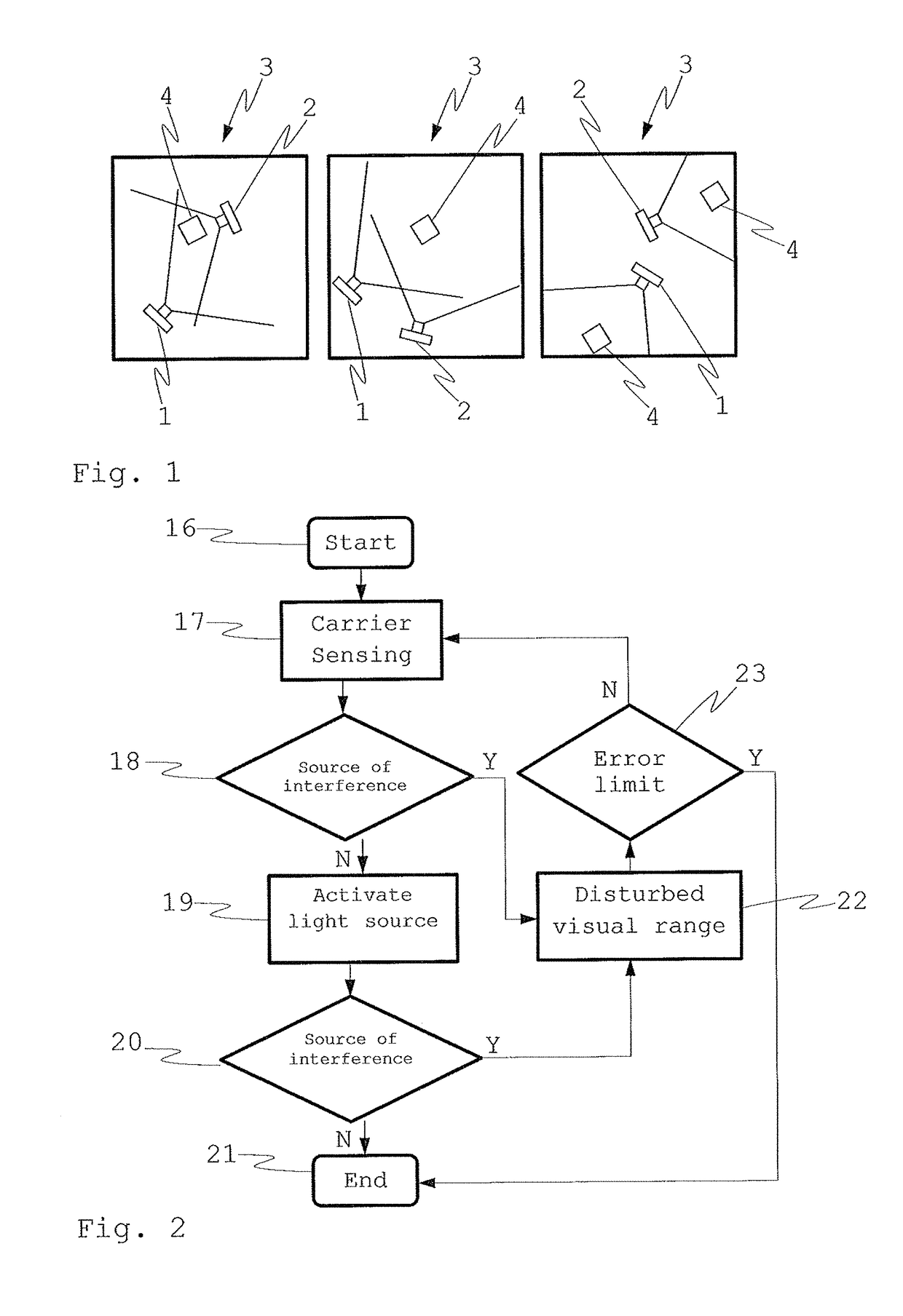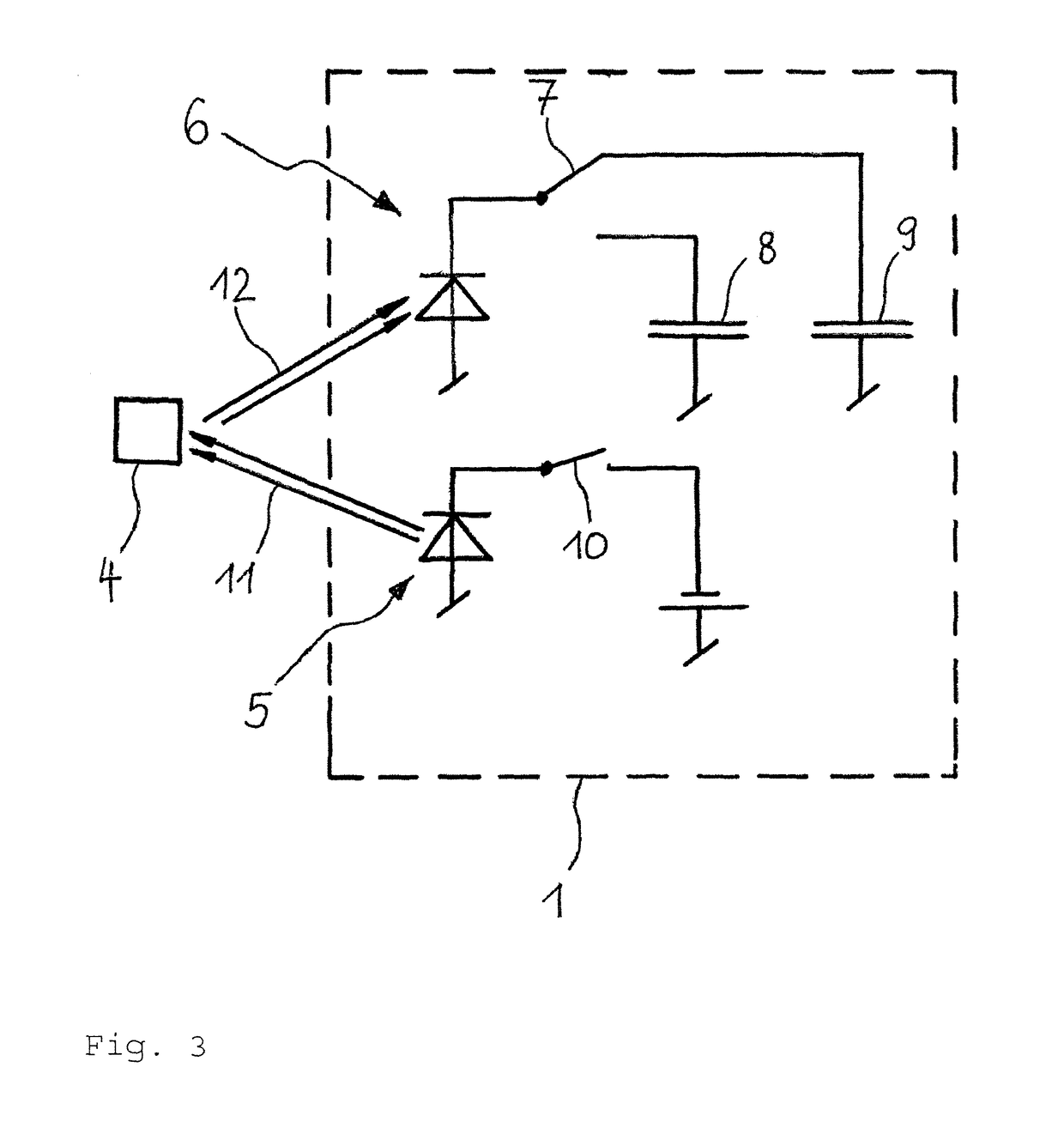Recording method for at least two TOF cameras
- Summary
- Abstract
- Description
- Claims
- Application Information
AI Technical Summary
Benefits of technology
Problems solved by technology
Method used
Image
Examples
Embodiment Construction
[0040]FIG. 1 shows a scene 3 consisting of objects 4 in three potential constellations, which scene is to be recorded by means of two time-of-flight cameras 1, 2. In the left constellation, the visual fields of the individual cameras 1, 2 overlap one another to a high extent. Since the cameras are situated opposite of each other, the light of the one camera is co-detected by the other camera in a direct manner, i.e. without prior reflection on an object 4. One must therefore expect a strong mutual influence of the cameras 1, 2 caused by the emitted light and therefore a strong falsification of the determined depth information.
[0041]In the constellation shown in the middle, the cameras 1, 2 do not illuminate each other directly, but reflected light of the one camera is co-detected by the respective other camera. In this case too, a mutual influence can also be expected, even though it is lower than in the left constellation. In the constellation shown on the right, the visual fields ...
PUM
 Login to View More
Login to View More Abstract
Description
Claims
Application Information
 Login to View More
Login to View More - R&D
- Intellectual Property
- Life Sciences
- Materials
- Tech Scout
- Unparalleled Data Quality
- Higher Quality Content
- 60% Fewer Hallucinations
Browse by: Latest US Patents, China's latest patents, Technical Efficacy Thesaurus, Application Domain, Technology Topic, Popular Technical Reports.
© 2025 PatSnap. All rights reserved.Legal|Privacy policy|Modern Slavery Act Transparency Statement|Sitemap|About US| Contact US: help@patsnap.com



